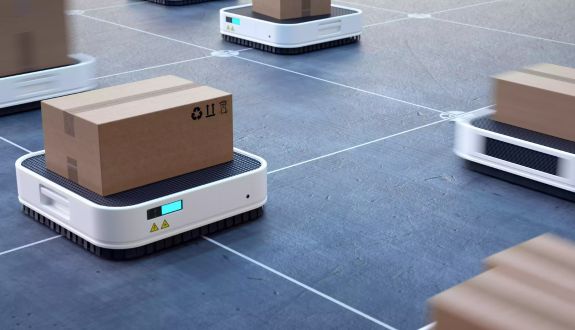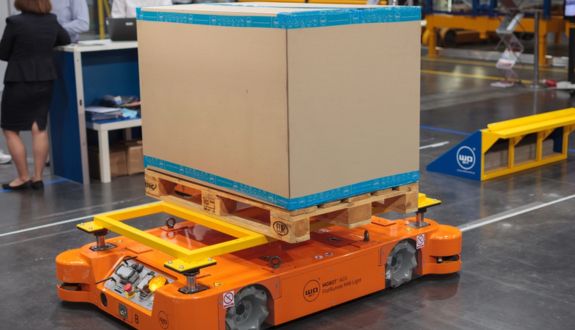What is an autonomous mobile robot (AMR)?
Years ago, the cutting edge of automated storage involved autonomous guided vehicles or AGVs. Over time, those AGVs evolved into autonomous mobile robots (AMRs). These sophisticated robots are becoming increasingly common for moving goods in warehouse and distribution center environments. That’s because they eliminate manual interventions and are more versatile than fixed-in-place systems like conveyors.
Today’s AMRs are able to not only sense their surroundings, but also react in real-time. For instance, they can detect obstructions and then make choices about how to handle them. In addition, AMRs can be reprogrammed, re-routed, and expanded upon to add more throughput. In facilities both small and large, the addition of AMRs has been shown to significantly reduce labor costs, mitigate operator risk, and improve performance.
If an AMR is equipped with the right software, an operator can teach the AMR where it can and cannot go. Essentially, the AMR creates a map, complete with acceptable alternate routing and the functions it needs to perform along the way. All of this can be easily programmed—and then reprogrammed when warehouse needs change. If the AMR is used for relatively simple functions, such as moving boxes across a facility, it does not require integration with a warehouse management system (WMS) or warehouse control system (WCS). However, AMRs that are used for more sophisticated functions, such as order fulfillment, should be integrated with and under the control of a WMS or WCS.
Can all warehouse management systems control AMRs?
No. In order to control an AMR, a warehouse management system (WMS) or warehouse control system (WCS) needs to have a particular integration point for AMRs. In addition, the WMS/WCS software architecture needs to have the capability to share data with and control the AMR in real time. Managed and monitored in this way, AMRs can be a cost-effective solution for facilities that do not want to invest in rigid infrastructure. For instance, in a low-volume warehouse, a small fleet of AMRs may be a more cost effective option than a conveyor system.

Cloud-based software enables users to monitor and manage AMR fleets across multiple facilities in real time. That way, a single technician working on a single console can be in charge of a distribution network and be on the lookout for bottlenecks, maintenance issues, etc. Cloud-based AMRs are not vulnerable to the latency issues that could affect other cloud-based components of the inventory management chain. For example, if a cloud-based conveyor system suffers a lag, the entire system comes to a standstill. If one cloud-based AMR suffers a lag, the impact is not as great.
